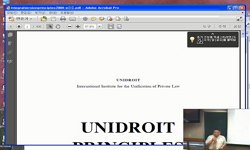The objective of this study is to quantify the potential economic effects of Non-Agricultural Market Access (NAMA) negotiations of the WTO on automotive industry of the world using a multi-region, multi-sector Computable General Equilibrium (CGE) mode...
http://chineseinput.net/에서 pinyin(병음)방식으로 중국어를 변환할 수 있습니다.
변환된 중국어를 복사하여 사용하시면 됩니다.
- 中文 을 입력하시려면 zhongwen을 입력하시고 space를누르시면됩니다.
- 北京 을 입력하시려면 beijing을 입력하시고 space를 누르시면 됩니다.

영문 ; WTO 비농산물협상이 전세계 자동차산업에 미치는 영향에 관한 연구 = English ; A Study on Economic Effects of NAMA Negotiations in the WTO on Automotive Industry of the World
한글로보기https://www.riss.kr/link?id=A82771143
- 저자
- 발행기관
- 학술지명
- 권호사항
-
발행연도
2011
-
작성언어
-
-
주제어
세계무역기구 비농산물 협상 ; 자동차산업 ; CGE모형 ; 경제적 영향 ; WTO ; NAMA negotiations ; Automotive industry ; CGE model ; Impact analysis
-
KDC
300
-
등재정보
KCI등재
-
자료형태
학술저널
- 발행기관 URL
-
수록면
95-126(32쪽)
- 제공처
-
0
상세조회 -
0
다운로드
부가정보
다국어 초록 (Multilingual Abstract)
The objective of this study is to quantify the potential economic effects of Non-Agricultural Market Access (NAMA) negotiations of the WTO on automotive industry of the world using a multi-region, multi-sector Computable General Equilibrium (CGE) model with 21 countries/regions and 22 sectors. According to the December 2008 NAMA modalities text, issued by the chair of the negotiation on NAMA, three different scenarios of tariff liberalization of NAMA are conducted on the basis of the Swiss formula with a coefficient of 8 for developed members and 20 for developing (scenario 1), with a coefficient of 8 for developed members and 22 for developing (scenario 2) and with a coefficient of 8 for developed members and 25 for developing (scenario 3). Simulation results show potential economic effects at the macroeconomic and microeconomic level of 21 countries concerned. In particular, Korea is to be one of the winners of tariff liberalization of NAMA in the WTO and Korean automotive industry is to benefit from it to a large extent in terms of its output, domestic sales, exports and trade balance, which implies that Korea needs to actively engage in NAMA negotiations of the WTO.
동일학술지(권/호) 다른 논문
-
국제경제 자산시장을 통한 한국경제와 미국경제의 동조화 분석
- 국제지역학회
- 김종선 ( Jong Seon Kim )
- 2011
- KCI등재
-
- 국제지역학회
- 김형식 ( Hyung Sik Kim )
- 2011
- KCI등재
-
- 국제지역학회
- 한상준 ( Sang Jun Han )
- 2011
- KCI등재
-
한국 수출중소기업에서 성과, 자원, 차별화 우위의 관계 및 조직 유기성의 조절 효과 연구
- 국제지역학회
- 조연성 ( Yeon Sung Cho )
- 2011
- KCI등재




 KISS
KISS





